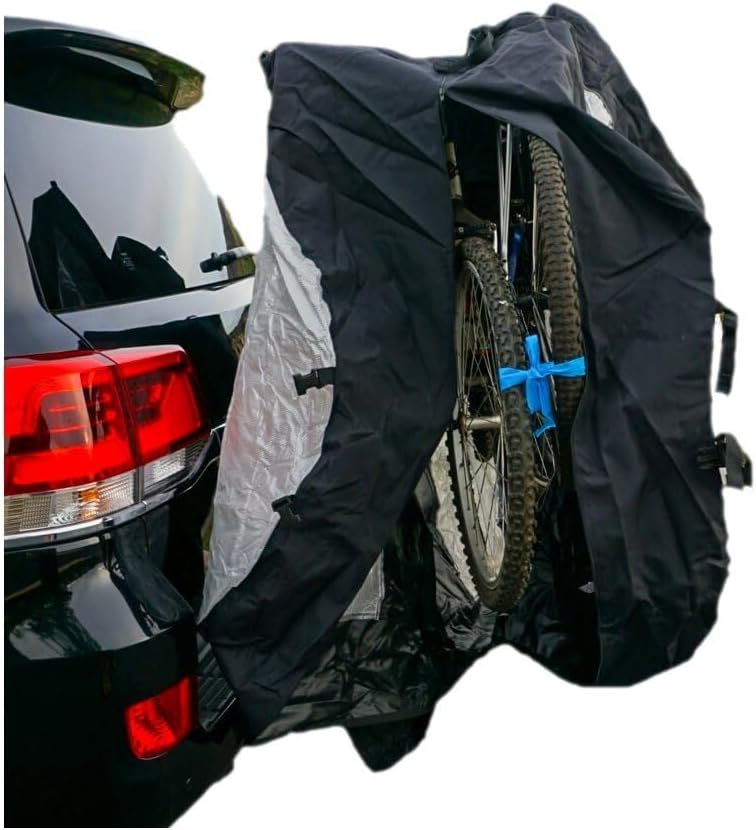
This step-by-step guide titled “How to Prepare for Travel Emergencies with Trip Protection” aims to help travelers understand the importance of trip protection and guide them through the process of preparing for travel emergencies. Whether it’s a canceled flight, lost luggage, or a medical emergency, this guide will provide expert advice on how to protect yourself and your trip, ensuring a smoother and worry-free travel experience.
Top Travel Insurance Options
Understand the Importance of Trip Protection
Having trip protection is crucial when it comes to ensuring a smooth and stress-free travel experience. Emergencies can happen at any time, and being prepared with trip protection can provide you with valuable benefits and peace of mind. First and foremost, trip protection offers financial coverage in case of unforeseen events such as trip cancellations or interruptions. For example, if you or a family member falls ill before your trip, trip protection can help reimburse you for non-refundable expenses like flights, accommodations, or tours.
Another important benefit of trip protection is emergency medical coverage. Imagine you’re traveling abroad and suddenly need medical attention due to an illness or injury. With trip protection, you can have access to emergency medical assistance, including hospitalization, medical evacuation, or repatriation. This coverage can be a lifesaver in situations where medical costs can quickly add up, or when you need to be transported back home for further treatment.
To ensure you have trip protection in place, follow these steps:
- Research and compare different travel insurance options available. Look for policies that specifically mention trip protection, cancellation coverage, and emergency medical benefits.
- Read the policy details carefully to understand what is covered and what is excluded. Pay attention to any pre-existing medical conditions that may affect your coverage.
- Purchase the trip protection policy that best suits your needs and budget. Some policies may offer additional coverage options like baggage loss or delay, so consider your specific travel requirements.
- Keep a copy of your trip protection policy and emergency contact information with you while traveling. This will ensure you have quick access to help and assistance when needed.
Remember, emergencies can happen unexpectedly, and having trip protection can be a valuable safeguard. So, take the necessary steps to understand and obtain the right coverage for your travel plans, giving yourself the peace of mind to fully enjoy your trip.
Research and Select Trip Protection Options
When it comes to planning your trip, it’s essential to consider trip protection options that suit your individual travel needs. Here are some steps to help you research and select the right trip protection plan or insurance:
- Assess your travel needs: Start by evaluating the level of protection you require. Consider factors like the destination, duration of your trip, activities you plan to engage in, and the value of your belongings. This assessment will help you determine what types of coverage are necessary for your specific travel situation.
- Compare different plans: Research various trip protection plans or insurance policies available in the market. Look for plans that provide coverage for areas that are important to you, such as trip cancellation or interruption, medical expenses, lost baggage, or emergency evacuation. Pay attention to policy exclusions, limitations, and any deductibles or excesses that may apply.
- Read customer reviews: To get a better understanding of the reliability and customer satisfaction of different trip protection options, read reviews from other travelers. Look for reviews that highlight real-life experiences and instances where the insurance company provided prompt and efficient assistance during emergencies or claims.
- Consider your existing coverage: Check if your existing health insurance, credit card, or homeowner’s insurance policy already offers some trip protection benefits. Understanding what coverage you already have can help you avoid purchasing duplicate or unnecessary protection.
- Contact customer service: If you have any questions or need clarification regarding the coverage details or terms of a particular trip protection plan, don’t hesitate to contact the insurance company’s customer service. A friendly conversation with their representatives will provide you with the information you need to make an informed decision.
By following these steps and taking the time to research and select the right trip protection option, you can ensure that you have the necessary coverage in place to protect yourself and your belongings during your travels.
Review the Coverage Details
To carefully review the coverage details of your chosen trip protection plan, start by thoroughly understanding the policy terms and conditions. Begin by reading through the entire document, paying close attention to the fine print and any exclusions. Look for information on what is covered, such as trip cancellation, medical emergencies, lost baggage, and delays. It’s important to have a clear understanding of the limits and specific conditions for each type of coverage.
Next, take note of any deductible amounts and how they apply to each coverage category. Understanding the deductibles will help you calculate the out-of-pocket expenses you may have to bear in case of a claim. Additionally, familiarize yourself with the claim process outlined in the policy. Take note of the required documentation, deadlines, and any specific steps you need to follow to file a claim successfully.
Remember, reviewing the coverage details is essential to ensure you have the right level of protection for your trip. Make sure to ask any questions you may have and seek clarification from the insurance provider if there’s anything you don’t understand. Taking the time to carefully review the coverage details will give you peace of mind and help you make informed decisions about your trip protection plan.
Pack Essential Documents and Information
When preparing for your trip, it’s essential to pack all the necessary documents and information that you may need along the way. To help you stay organized, here is a checklist of essential items to include in your travel documents:
- Passport: Make sure your passport is up to date and has at least six months of validity remaining.
- Visas: Check if your destination requires a visa and ensure you have the necessary documentation.
- Emergency contact numbers: Write down important phone numbers, such as your country’s embassy or consulate, local emergency services, and your designated emergency contacts.
- Insurance policy details: Carry a copy of your travel insurance policy, including contact information for your insurance provider.
- Medical information: Note any allergies, pre-existing conditions, or medications you’re currently taking. Include your doctor’s contact information as well.
Remember to keep these documents in a safe place, such as a waterproof folder or a digital cloud storage account. Additionally, it’s a good idea to make copies of these documents and leave them with a trusted friend or family member back home.
Know the Emergency Procedures
In case of travel emergencies, it’s important to have a clear understanding of the emergency procedures and contact information you may need. By being prepared, you can ensure a smoother and quicker resolution to any unforeseen situations that may arise during your trip. Here are some key steps to take and contact information to have on hand for various travel emergencies:
- Medical Emergencies: If you or someone you’re traveling with experiences a medical emergency, the first step is to call the local emergency services number, which may vary depending on the country you’re in. For example, in the United States, the emergency number is 911. While waiting for medical assistance, try to provide as much detail about the situation and location as possible. It’s also important to have your travel insurance information readily available so you can contact them for assistance and guidance.
- Lost or Stolen Items: In the unfortunate event that your belongings are lost or stolen, act promptly to minimize any potential damage or inconvenience. First, report the incident to the local police or relevant authorities as soon as possible. They will provide you with an official report, which you’ll need for insurance claims or replacing important documents. Additionally, contact your embassy or consulate for further guidance and assistance. It’s advisable to keep copies of important documents, such as your passport and travel insurance, in a separate location from the originals. This will help facilitate the process of obtaining replacements if needed.
- Trip Cancellations: If you need to cancel or alter your travel plans due to unforeseen circumstances, such as a family emergency or illness, contact your travel agent, airline, or accommodation provider immediately. Many airlines and travel agencies have dedicated customer service lines for such situations. Additionally, check your travel insurance policy to understand if trip cancellations are covered and the process for making a claim. Having these contact numbers saved in your phone or written down in a convenient place will save you time and stress in case of a trip cancellation.
Remember, the key to handling travel emergencies is to stay calm, act swiftly, and reach out to the appropriate channels for assistance. By familiarizing yourself with the emergency procedures and contact information before your trip, you’ll be better equipped to handle any unexpected situations that may arise.
Wrap up and stay protected
In conclusion, it is crucial to prioritize trip protection and be prepared for travel emergencies. By following the guide we have provided, you can take proactive steps to safeguard your travel plans and ensure peace of mind during your trips. Remember to research and invest in a comprehensive trip protection plan, familiarize yourself with emergency contact information, pack a well-stocked travel first aid kit, and stay informed about local safety precautions. By taking these measures, you can minimize the impact of unexpected situations and focus on enjoying your travel experiences to the fullest. Safe travels!














I had a bad experience with a travel emergency in the past where I didn’t know what to do. It would be helpful if you could include some basic emergency procedures in the guide.
I’m sorry to hear about your past experience. Including basic emergency procedures in the guide is a great suggestion. In case of a travel emergency, it’s important to stay calm and assess the situation. Contact your trip protection provider immediately for guidance and assistance. Familiarize yourself with the local emergency services contact numbers and keep them easily accessible. It’s also a good idea to have a backup plan for communication and know the location of the nearest embassy or consulate. I will update the guide to include these important steps. Thank you for your feedback!
I always worry about losing important documents while traveling. What are some essential documents that I should make sure to pack?
Losing important documents can be a major inconvenience while traveling. Some essential documents to pack include your passport, travel insurance policy details, copies of your identification, emergency contact information, and any necessary visas or permits. It’s also a good idea to have digital copies of these documents stored securely on your phone or in the cloud for easy access in case of loss or theft.
I’ve never purchased trip protection before. Are there any specific companies or providers that you recommend researching for trip protection options?
When researching trip protection options, it’s important to consider reputable companies that have a track record of providing reliable coverage. Some popular providers include Allianz Travel, Travel Guard, and World Nomads. However, it’s always a good idea to compare different providers and read reviews to find one that suits your specific needs and preferences.
I understand the importance of trip protection, but I’m curious about what specific situations it covers. Does it only cover medical emergencies or does it also include things like trip cancellations or lost luggage?
Great question! Trip protection typically covers a range of situations including medical emergencies, trip cancellations, lost luggage, and even emergency evacuation. It’s important to carefully review the coverage details of the specific trip protection options you’re considering to ensure they meet your needs.